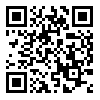Volume 19, Issue 3 (JIAEEE Vol.19 No.3 2022)
Journal of Iranian Association of Electrical and Electronics Engineers 2022, 19(3): 55-62 |
Back to browse issues page
Download citation:
BibTeX | RIS | EndNote | Medlars | ProCite | Reference Manager | RefWorks
Send citation to:



BibTeX | RIS | EndNote | Medlars | ProCite | Reference Manager | RefWorks
Send citation to:
Ragheb M, Kuhestani A, Safavi Hemami S M. Joint Beamforming and Artificial Noise Design in Secure Millimeter-wave Communications with the Aid of Intelligent Reflecting Surfaces. Journal of Iranian Association of Electrical and Electronics Engineers 2022; 19 (3) :55-62
URL: http://jiaeee.com/article-1-1337-en.html
URL: http://jiaeee.com/article-1-1337-en.html
Faculty of Electrical and Computer Engineering, Qom University of Technology
Abstract: (971 Views)
Millimeter wave communication is able to support wireless communications at data rates of several gigabits per second due to its abundant spectral resources. However, severe path losses and high directionality have made millimeter-wave systems vulnerable to obstruction. One solution to overcome this phenomenon is to use relays. Since the relays require power consumption and, in addition, some millimeter-wave equipment imposes high costs on systems, Intelligent Reflective Surfaces are being introduced as a new low-cost technology to overcome the above issues. In this paper, we consider an intelligent reflective surface-based millimeter wave system in which a base station, i.e., Alice sends its confidential messages to a user, i.e., Bob in the presence of a passive eavesdropper. With the aim of increasing the ergodic secrecy rate, the base station uses the idea of combining information signal with artificial noise. In this regard, optimizing the transmitted signal power with artificial noise and the use of appropriate radiation in Alice and also the design of the optimal phase shift in the Intelligent Reflective Surfaces are presented. In addition, in this paper, we calculate a closed form expression for the cumulative distribution function of the legal and illegal channels to evaluate the ergodic secrecy rate. Numerical results show that, firstly, the proposed design improves the ergodic secrecy rate metric and, secondly, the proposed design offers better performance against the phenomenon of obstruction in millimeter-wave communications.
Keywords: Intelligent reflecting surface, Joint beamforming and artificial noise, Secure millimeter-wave communications.
Type of Article: Research |
Subject:
Communication
Received: 2021/06/21 | Accepted: 2021/12/4 | Published: 2022/09/2
Received: 2021/06/21 | Accepted: 2021/12/4 | Published: 2022/09/2
Send email to the article author
| Rights and permissions | |
 |
This Journal is an open access Journal Licensed under the Creative Commons Attribution-NonCommercial 4.0 International License. (CC BY NC 4.0) |







